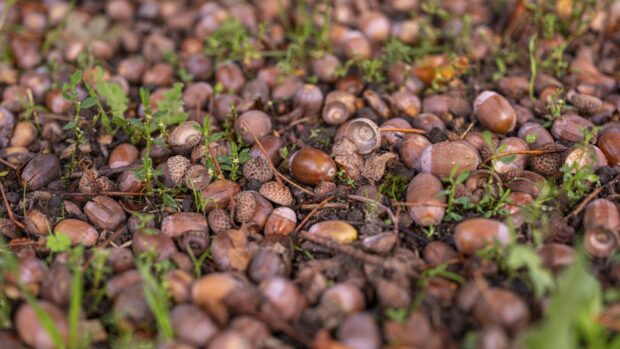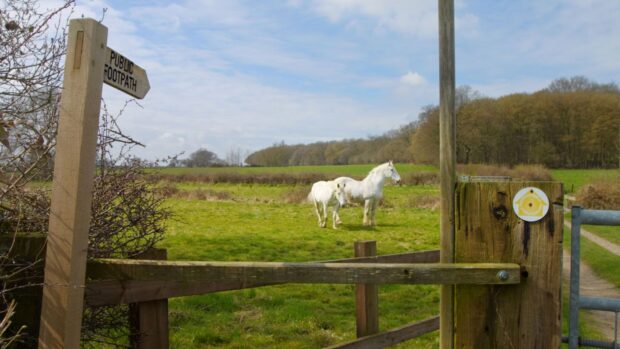A week of warmer weather and the changing of the clocks will undoubtedly lift the spirits of nearly every horse owner. However, these changes also tell us spring is here and that the grass is growing faster, so for owners of horses prone to being overweight or suffer from laminitis, the news isn’t all good.
With most horses going into the winter in good condition, there hasn’t been much cold weather to burn off any excess weight, and many horses have come out of winter in much the same shape they went in.
A facet of the milder winters we are experiencing is that grass continues to grow longer into the winter and starts to grow earlier in the spring. As a rule of thumb, if the soil temperature is above 5ºC, grass will grow.
A downside of warmer, wetter weather is that the soil of horse pasture is more likely to suffer hoof damage. If the ground is not maintained, it will deteriorate into a horse-sick, weedy mess within a matter of seasons.
More grass is great news for those such as breeders who use it as a good source of nutrition for their horses and have the time to maintain it. Plentiful grass is less good for time-poor owners and those with animals susceptible to laminitis. For these, less grass would be more beneficial in terms of animal health and paddock maintenance – setting up a track system might be a useful option if your landowner will allow.
Spring grass, even in the poorest horse pastures, is high in nutritional value, especially when compared to winter forages. It is high in energy, derived from its sugar and protein contents. Excess protein is converted in the body and stored as fat.
A study in the US showed that spring pasture has a protein content of nearly 30%, while research from the Institute of Grassland and Environmental Research in Aberystwyth showed grass sugar (sucrose and fructan) levels to be 20-30% of the plant’s dry matter.
As such, it makes sense to limit access to grazing for susceptible animals and to limit time spent out on spring grass for horses turned out for the first time after winter, to allow their digestive systems to adapt.
Spring paddock maintenance
- Sort out winter poaching damage to repair damaged soil structure, improve drainage and reduce weed invasion
- Roll paddocks to even out the hoof damage or, at the very least, tread divots as you collect droppings
- Rolling flattens the field surface and brings grass plants back into contact with the soil, keeping weeds down
- For quick repair to poaching damage, cover bare areas with grass seed, and roll it in. Keep horses off the area
You may also be interested in…

Six tips to help turn poor paddocks into perfect pastures
It has not been an easy winter and you are certainly not the only horse owner tearing your hair out

12 signs it (might be) nearly springtime
Call us over-optimistic, but with the sun shining today it’s got us thinking — could spring be lurking around the

My winter fields are trashed: what can I do?
Do your paddocks resemble the aftermath of a battle field? This step-by-step guide will have your paddocks back to health

Which trees should you plant in your horse’s field?
H&H explores which trees and hedges are most suitable to plant in horse fields

Subscribe to Horse & Hound magazine today – and enjoy unlimited website access all year round
Horse & Hound magazine, out every Thursday, is packed with all the latest news and reports, as well as interviews, specials, nostalgia, vet and training advice. Find how you can enjoy the magazine delivered to your door every week, plus options to upgrade your subscription to access our online service that brings you breaking news and reports as well as other benefits.



